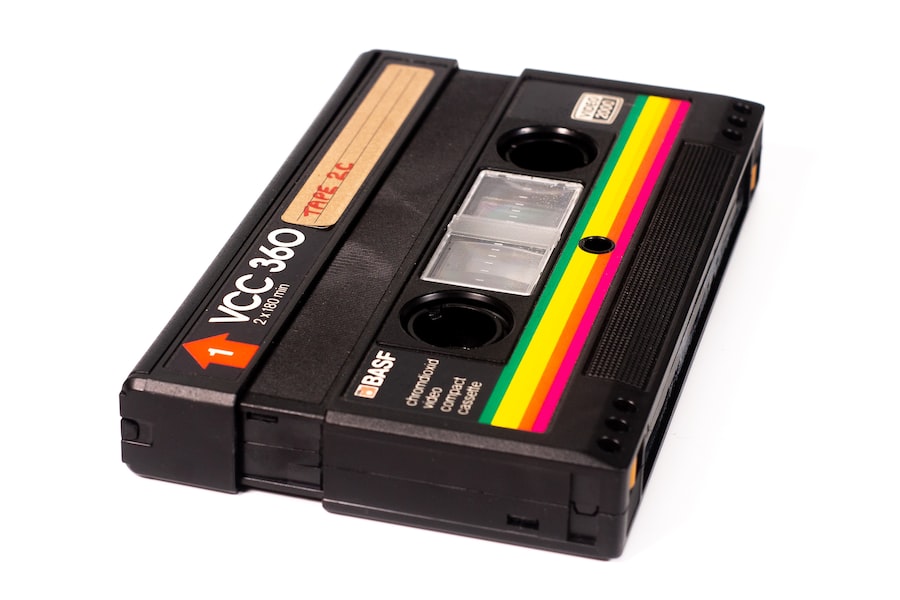Home lighting plays a crucial role in our daily lives, impacting our mood, productivity, and overall well-being. It is not just a functional aspect of our homes but also a key element in home decor and ambiance. The right lighting can create a warm and inviting atmosphere, while poor lighting can make a space feel dull and uninviting. Therefore, it is essential to understand the importance of lighting and how it can enhance our living spaces.
Lighting has a significant impact on our mood and emotions. Bright, natural light can boost our energy levels and improve our mood, while dimmer, warmer lighting can create a cozy and relaxing ambiance. In addition, proper lighting is essential for performing tasks such as reading or cooking. Insufficient lighting can strain our eyes and make it difficult to focus, leading to decreased productivity.
Furthermore, lighting plays a crucial role in home decor. It can highlight architectural features, artwork, or furniture pieces, creating focal points in a room. Different types of lighting fixtures, such as chandeliers, pendant lights, or wall sconces, can add character and style to a space. Therefore, choosing the right lighting fixtures and bulbs is essential for creating the desired ambiance and enhancing the overall aesthetic of your home.
The Evolution of Lighting Technology: From Incandescent to LED
Traditional incandescent bulbs have been the most common type of lighting in homes for many years. However, they have several drawbacks that make them inefficient and unsustainable. Incandescent bulbs produce light by heating a filament inside the bulb until it glows. This process generates a significant amount of heat, making incandescent bulbs highly energy-consuming.
Moreover, incandescent bulbs have a short lifespan compared to other types of lighting. They typically last for around 1,000 hours before burning out and needing replacement. This frequent replacement not only adds to the cost but also contributes to waste and environmental impact.
In recent years, there has been a significant shift towards LED (Light Emitting Diode) technology in the lighting industry. LED bulbs are much more energy-efficient than incandescent bulbs, consuming up to 80% less energy. They also have a much longer lifespan, lasting up to 25,000 hours or more. This not only reduces energy consumption but also saves money in the long run.
Philips’ Commitment to Sustainable Lighting Solutions
As a leading lighting company, Philips has been at the forefront of developing sustainable lighting solutions. They have recognized the need to reduce energy consumption and carbon footprint in the lighting industry and have taken significant steps towards achieving this goal.
Philips has focused on developing eco-friendly lighting products that are both energy-efficient and long-lasting. Their LED bulbs consume significantly less energy than traditional incandescent bulbs, helping homeowners reduce their electricity bills and carbon emissions. Additionally, Philips LED bulbs have a lifespan of up to 25,000 hours or more, reducing the need for frequent replacements and minimizing waste.
Furthermore, Philips has implemented various initiatives to promote sustainability in their manufacturing processes. They have invested in research and development to improve the efficiency of their lighting products and reduce their environmental impact. Philips is committed to using sustainable materials and manufacturing methods that minimize waste and maximize energy efficiency.
Smart Lighting: The Future of Home Lighting
Smart lighting is an emerging trend in the lighting industry that has the potential to revolutionize the way we illuminate our homes. Smart lighting refers to lighting systems that can be controlled remotely through a smartphone app or voice commands. These systems offer a wide range of features and capabilities that go beyond traditional lighting.
One of the key benefits of smart lighting is its ability to be customized according to individual preferences and needs. With smart lighting systems like Philips Hue, homeowners can adjust the brightness, color temperature, and even color of their lights to create the desired ambiance. This level of customization allows for endless possibilities in terms of creating different moods and settings in each room.
Another advantage of smart lighting is its energy efficiency. Smart lighting systems like Philips Hue use LED technology, which is already highly energy-efficient. However, they take it a step further by allowing users to schedule their lights to turn on and off at specific times or adjust the brightness based on natural light levels. This level of automation helps homeowners save energy and reduce their electricity bills.
Additionally, smart lighting systems offer enhanced convenience and security. With features like motion sensors and geofencing, homeowners can automate their lights to turn on or off when they enter or leave a room or their home. This not only provides added convenience but also enhances home security by giving the illusion that someone is home even when they are not.
The Benefits of Smart Lighting for Homeowners
Smart lighting systems like Philips Hue offer numerous benefits for homeowners, making them an attractive option for those looking to upgrade their lighting setup. Here are some of the key advantages of smart lighting:
1. Increased energy efficiency and cost savings: Smart lighting systems use LED technology, which is already highly energy-efficient. However, they take it a step further by allowing users to schedule their lights to turn on and off at specific times or adjust the brightness based on natural light levels. This level of automation helps homeowners save energy and reduce their electricity bills.
2. Customizable lighting options for different moods and activities: With smart lighting systems like Philips Hue, homeowners can adjust the brightness, color temperature, and even color of their lights to create the desired ambiance. This level of customization allows for endless possibilities in terms of creating different moods and settings in each room.
3. Improved home security and convenience: Smart lighting systems offer enhanced convenience and security. With features like motion sensors and geofencing, homeowners can automate their lights to turn on or off when they enter or leave a room or their home. This not only provides added convenience but also enhances home security by giving the illusion that someone is home even when they are not.
Philips Hue: The Ultimate Smart Lighting System

Philips Hue is one of the most popular and widely recognized smart lighting systems on the market. It offers a wide range of features and capabilities that allow homeowners to create personalized lighting experiences in their homes. Whether you want to set the mood for a cozy movie night or create a vibrant atmosphere for a party, Philips Hue has you covered.
The Philips Hue system consists of smart LED bulbs, light strips, and accessories that can be controlled through the Philips Hue app or voice commands. The app allows users to adjust the brightness, color temperature, and even color of their lights, as well as create custom lighting scenes and schedules.
How Philips Hue Works: Features and Capabilities
The Philips Hue app is the central hub for controlling and customizing your Philips Hue lights. It is available for both iOS and Android devices and offers a wide range of features and capabilities.
One of the key features of the Philips Hue app is the ability to control your lights remotely. Whether you are at home or away, you can easily turn your lights on or off, adjust the brightness, or change the color using your smartphone. This level of control allows for added convenience and flexibility in managing your lighting setup.
The app also allows users to create custom lighting scenes and schedules. You can create different scenes for different moods or activities, such as “Relax,” “Energize,” or “Concentrate.” These scenes can be activated with a single tap, instantly transforming the ambiance of a room.
Furthermore, the Philips Hue app offers integration with popular smart home platforms such as Amazon Alexa, Google Assistant, and Apple HomeKit. This means that you can control your lights using voice commands, making it even more convenient and hands-free.
Philips Hue: Customizable Lighting for Every Room
One of the key advantages of Philips Hue is its versatility and ability to be customized for every room and setting. Whether you want to create a cozy atmosphere in your living room, a bright and energizing environment in your kitchen, or a relaxing ambiance in your bedroom, Philips Hue has the right lighting options for you.
For general lighting, Philips Hue offers a range of smart LED bulbs that can be used in standard light fixtures. These bulbs are available in different shapes and sizes, including A19, BR30, and GU10, to fit various types of fixtures. They can be dimmed and adjusted to create the desired brightness and color temperature.
In addition to standard bulbs, Philips Hue also offers light strips and accent lighting options. Light strips are flexible LED strips that can be placed under cabinets, behind TVs, or along walls to create a subtle and indirect lighting effect. Accent lighting options include spotlights and wall-mounted fixtures that can be used to highlight specific areas or objects in a room.
Philips Hue: Integration with Smart Home Systems
Another key advantage of Philips Hue is its integration with popular smart home platforms. This allows homeowners to control their lights using voice commands or automate their lighting setup based on other smart devices or sensors in their home.
Philips Hue is compatible with Amazon Alexa, Google Assistant, and Apple HomeKit, among others. This means that you can control your lights using voice commands through devices like Amazon Echo or Google Home. You can simply say “Alexa, turn on the living room lights” or “Hey Google, dim the bedroom lights,” and your lights will respond accordingly.
Furthermore, Philips Hue can be integrated with other smart home devices such as motion sensors or door/window sensors. This allows for advanced automation and customization of your lighting setup. For example, you can set your lights to turn on automatically when you enter a room or adjust the brightness based on the natural light levels.
Philips Hue and the Future of Home Lighting
In conclusion, Philips Hue is a leading example of innovative and sustainable lighting solutions. With its wide range of features and capabilities, it offers homeowners the ability to create personalized lighting experiences in their homes. From adjusting the brightness and color of their lights to creating custom lighting scenes and schedules, Philips Hue allows for endless possibilities in terms of creating different moods and settings in each room.
Furthermore, Philips Hue’s integration with popular smart home platforms and devices makes it even more convenient and versatile. With voice control and automation capabilities, homeowners can easily manage their lighting setup and enhance their overall smart home experience.
As smart lighting continues to evolve, we can expect to see even more advanced features and capabilities that will further transform the way we live. Philips Hue is at the forefront of this evolution, constantly pushing the boundaries of what is possible in home lighting. With its commitment to sustainability and innovation, Philips is paving the way for a brighter and more energy-efficient future.
















Add Comment